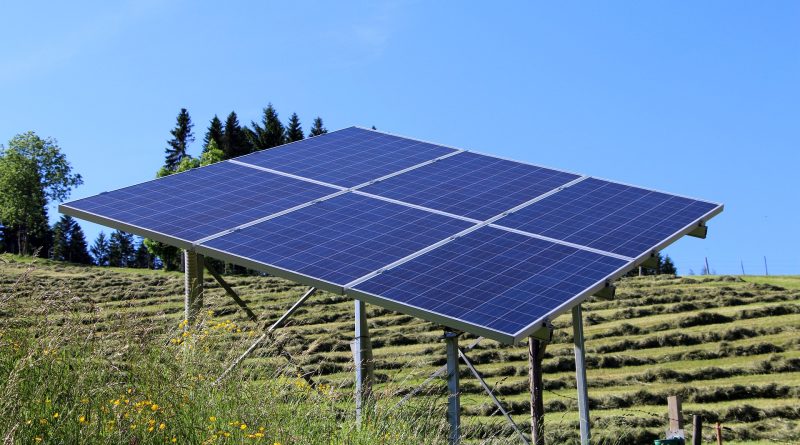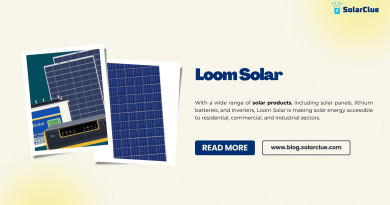Solar Panels Tower Placement: Exploring Practical Constraints
Table of Contents
Solar Panels on Towers: Why it’s Not Commonly Done
Solar energy has emerged as a sustainable and environmentally friendly alternative to traditional power sources. With its immense potential, the adoption of solar panels has increased dramatically in recent years. However, you may have wondered why solar panels are typically installed on rooftops or vast open land, instead of being elevated on towers. In this blog, we will explore the reasons behind this design choice and delve into the advantages of ground-based solar panel installations instead.
Challenges of Elevated Solar Panels
Erecting solar panels on towers presents a range of challenges that have deterred developers from widely adopting this approach. Some of the key obstacles include:
Limited Space and Cost
One of the primary concerns when considering the installation of solar panels on towers is the limited space available. By their very nature, towers have a smaller footprint compared to open land or buildings. Maximizing the utilization of space using solar panels requires a significant investment, given the cost of constructing and maintaining tall structures. Consequently, this limits the overall efficiency of the installation as the usable land space per unit of power generation decreases.
Structural Stability and Maintenance
Another drawback of placing solar panels on towers is the increased vulnerability to structural stress. Tall structures are subject to varying weather conditions such as high winds, storms, and even earthquakes, which can compromise the stability of the tower. The additional stress imposed by elevated solar panels adds to the structural challenges, making regular maintenance and inspections more complex, time-consuming, and costly.
Shadowing and Efficiency Issues
When solar panels are installed on rooftops or open land, strategic placement can be achieved to avoid shade from nearby obstructions such as buildings or trees. However, towers usually have a higher density of surrounding structures, resulting in increased shading. Shadowing caused by the tower itself or other nearby obstacles diminishes the amount of sunlight reaching the solar panels, subsequently reducing their overall energy production. This inherent limitation on tower-based solar installations significantly affects the efficiency of the panels.
Ground-based Solar Installations
While placing solar panels on towers poses various challenges, ground-based installations offer several advantages that make them the preferred choice for most solar projects. Some noteworthy benefits include:
More Available Space and Reduced Costs
Ground-based solar installations benefit from ample available space, be it open land or rooftops. This allows for efficient placement, with less concern about space constraints. Moreover, ground installations are financially more favorable as they typically require fewer structural adaptations and are less affected by zoning restrictions that may be imposed by municipalities for tower structures. The cost-effectiveness and flexibility of ground installations often outweigh the potentially increased energy yield that a tower installation might offer due to its elevated position.
Improved Maintenance and Safety
Ground-level solar panels provide easier access for installation, maintenance, and cleaning. Unlike towers, which require intricate safety measures and equipment for technicians to reach the panels, ground-based installations can be serviced with ease. This enhances the overall safety aspects as well, reducing the risks associated with working at heights. Simpler maintenance procedures contribute to lower operational costs and greater system longevity.
Optimized Efficiency and Performance
Ground-based solar installations have an advantage in terms of optimizing energy production. Precision in panel alignment and orientation is easier to achieve when mounted on flat ground or rooftops, ensuring maximum exposure to sunlight throughout the day. Additionally, the absence of shadowing obstacles found near towers contributes to a more consistent energy output, resulting in improved overall efficiency and performance.
Conclusion
Explore elevated solar solutions with SolarClue® as we delve into the practical constraints of tower-mounted solar panels. Overcoming ground limitations, these installations optimize sun exposure but require careful consideration of costs, wind loads, and maintenance challenges. SolarClue® offers expert assessments to determine the feasibility of tower-mounted panels for specific locations. Our guidance considers innovations like advanced tracking systems and durable materials, ensuring stability and efficiency. We assist businesses and homeowners in evaluating factors such as space availability, budget constraints, and local conditions, enabling a strategic decision-making process. Contact SolarClue® for personalized consultations and discover the possibilities of elevated solar living.
Frequently Asked Questions
Placing solar panels on towers helps overcome ground space limitations, enhances sun exposure, and minimizes shading issues, optimizing energy production.
Practical constraints include the cost of tower structures, potential wind loads, maintenance challenges, and the need for a sturdy foundation to support the elevated panels.
Tower structures can incur additional costs, impacting the overall feasibility of elevated installations compared to traditional ground-mounted systems.
ower-mounted panels are more practical in areas with limited ground space, such as urban environments or locations where the terrain is unsuitable for ground-mounted installations.
Tower-mounted panels need to be designed to withstand wind loads, and this can influence the choice of panel mounting systems and materials to ensure stability.
Tower-mounted panels may pose accessibility challenges for maintenance. Regular inspections and the use of advanced monitoring systems can help address maintenance issues effectively.
Yes, SolarClue® provides expert assessments, evaluating factors such as space constraints, wind loads, and maintenance considerations to determine the feasibility of tower-mounted solar panels for a given location.
Advanced tracking systems, durable materials, and smart technologies are continuously being developed to address practical constraints and enhance the efficiency and stability of tower-mounted solar panels.
A sturdy foundation is crucial for the stability of tower-mounted panels, and site-specific soil assessments and engineering expertise are required to ensure a secure installation.
Factors such as available space, budget constraints, local weather conditions, and maintenance capabilities should be carefully considered when evaluating the practicality and feasibility of tower-mounted solar panels.



